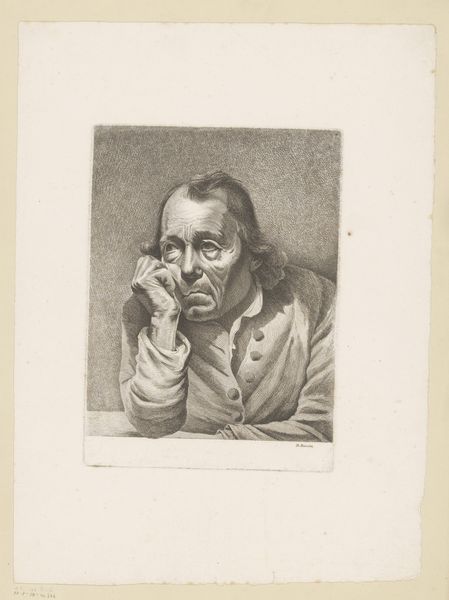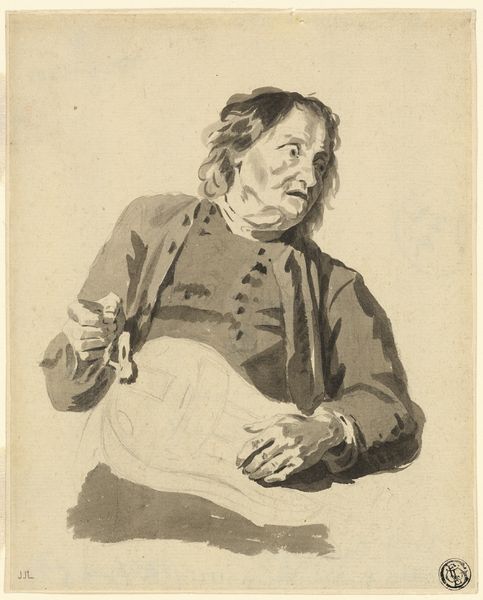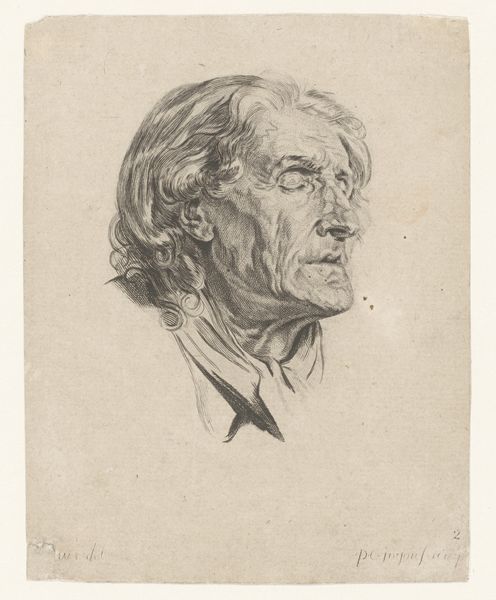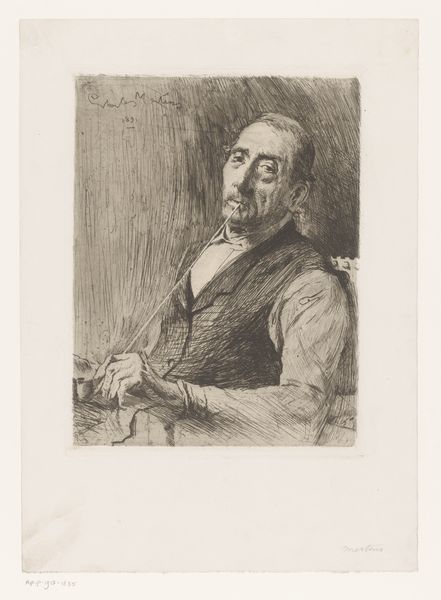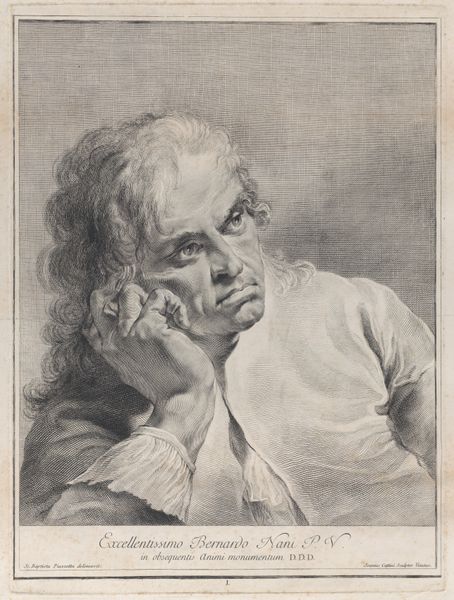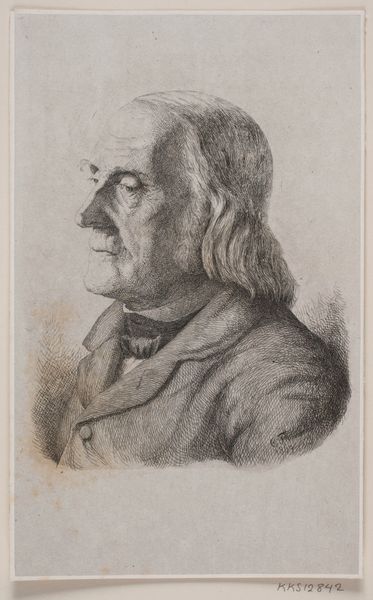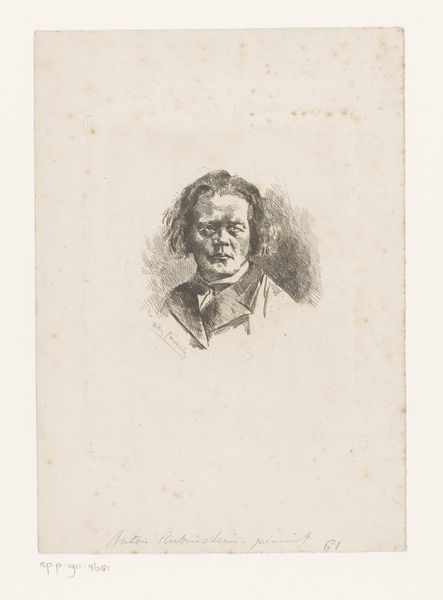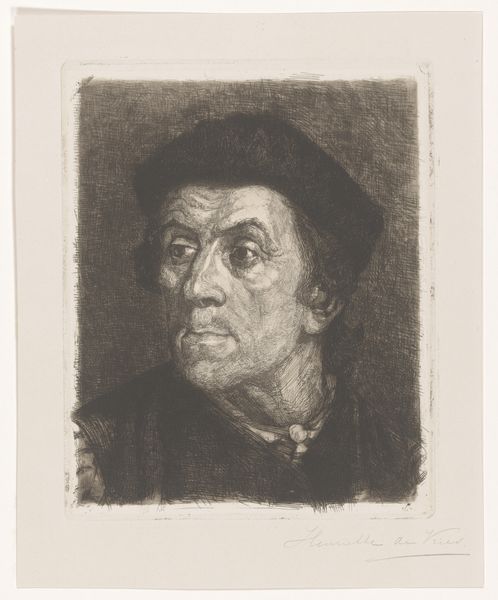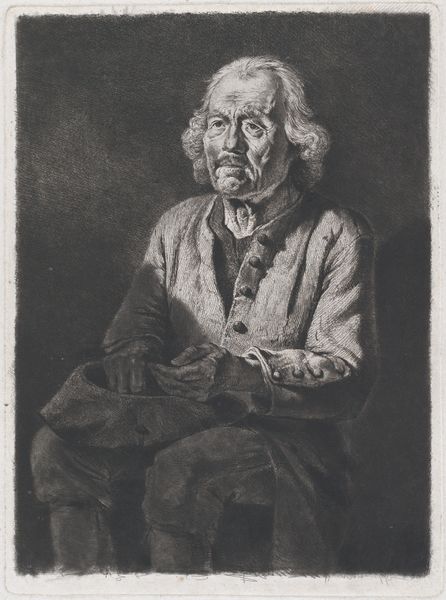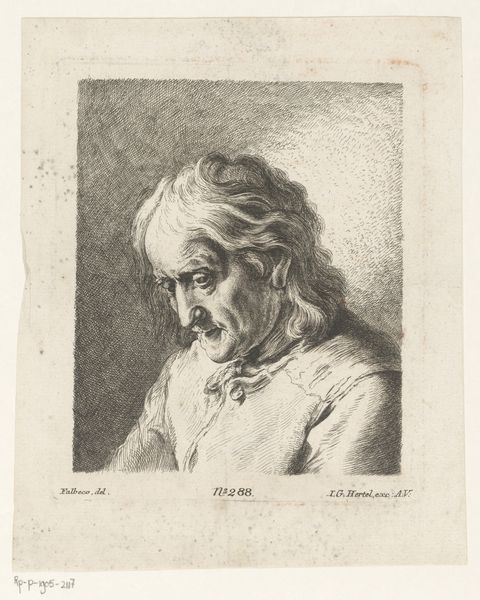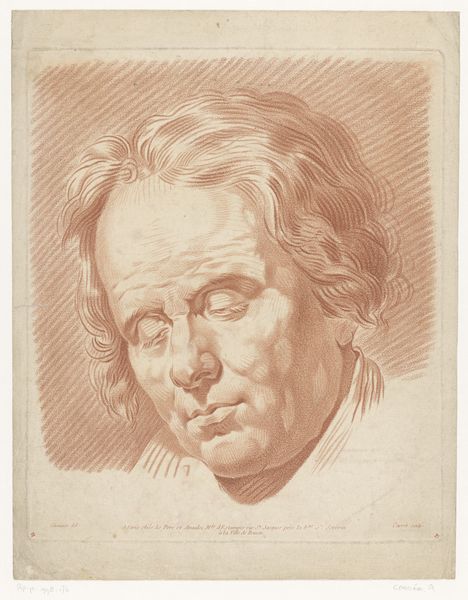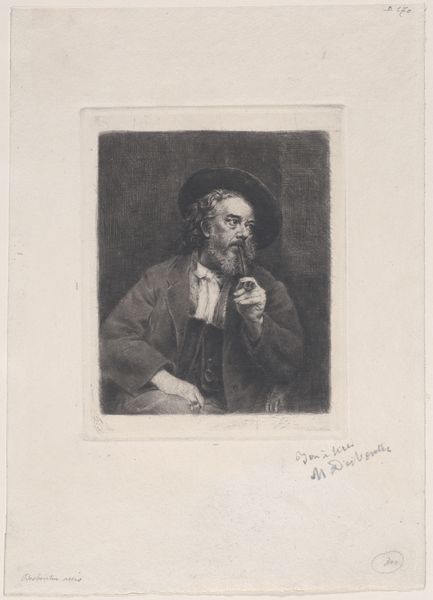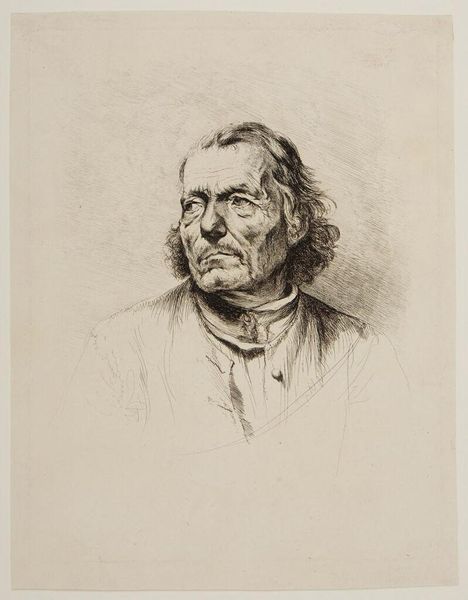
drawing, print, charcoal, engraving
#
portrait
#
drawing
#
neoclacissism
# print
#
charcoal drawing
#
pencil drawing
#
charcoal
#
engraving
Dimensions: Sheet: 8 1/4 × 6 3/8 in. (21 × 16.2 cm)
Copyright: Public Domain
Curator: Here we have "The Melancholic Man," a portrait dating from 1785 to 1805, credited to Chevalier Ignace Joseph de Claussin. It's a print combining engraving and charcoal techniques, very much in line with the Neoclassical movement. Editor: Wow. Heavy. Immediately, it’s just… sadness. This man is swimming in sorrow, isn't he? Look at those downcast eyes. It’s almost tangible. Curator: Indeed. Consider the historical context; such portraits became ways for the emerging middle class to assert themselves, even in melancholy. Melancholy became something of a fashionable pose in the late 18th century. Editor: Fashionable sadness? That’s a concept! Still, looking at this fellow, it goes deeper. Notice the fine lines etched into his face? Life’s carved some deep trenches there. Curator: The medium chosen is incredibly effective at conveying that sense of depth, yes. The combined use of engraving and charcoal allows for nuanced tonal variations, highlighting the psychological complexity but in line with the portrait tradition, the pose and the details still emphasize dignity and social standing. Editor: It does add a layer, like even in his sadness, there is a self-awareness. I feel like I've met this guy. Everyone’s been in that pensive posture. It's almost comforting, like being sad together. Curator: Absolutely. Art of this period had a distinct public role to portray a social mood, reflect moral ideals, and contribute to societal discourse. His private suffering is thus displayed in public. Editor: It almost dares you to not look away, and confront those deeper, maybe uncomfortable, feelings that connect us all, despite the time divide. But also not to dismiss sadness. It gives it a place, an expression. I am deeply touched by this piece. Curator: A final thought. It’s intriguing how this artwork reflects not just individual emotion, but the social and cultural moment that granted that emotion space, even validity. Editor: Yeah. And it's a helpful reminder that the "fashionable" sadness of any era is still rooted in something real. He still captures some universality in sorrow.
Comments
No comments
Be the first to comment and join the conversation on the ultimate creative platform.
